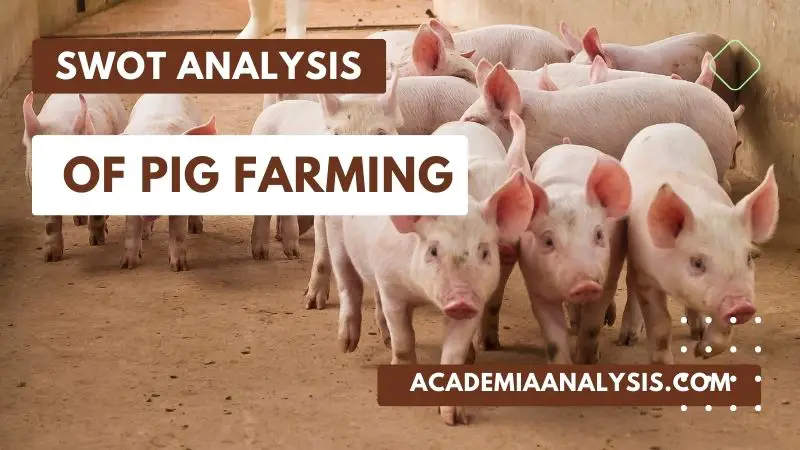Pig farming, also known as pig rearing, is the practice of raising domestic pigs for meat, leather, and other by-products. Pig farming is a popular and profitable business in many parts of the world, with pig meat being a staple food in many cultures. However, like any other business, pig farming has its strengths, weaknesses, opportunities, and threats.
This article will explore the SWOT analysis of pig farming.
Strengths
One of the notable advantages of pig farming is the remarkable demand for pig meat. Pig meat is a fundamental food item in various cultures worldwide, and its consumption is quite high. The substantial demand for pig meat translates into a substantial monetary benefit for pig farmers. Additionally, pigs are renowned for their speedy growth rate, which implies that farmers can quickly raise them and realize a profit.
Another key strength of pig farming lies in the versatility of pig by-products. Pig farmers can utilize virtually every part of the pig, including its meat, skin, and internal organs, to produce a diverse range of items such as leather, sausage, and animal feed. This versatility enables pig farmers to generate several revenue streams, making pig farming a profitable enterprise.
Weaknesses
An area of concern in pig farming is the challenge of high production costs. This activity entails significant expenditure on infrastructure, equipment, and feed. Moreover, the susceptibility of pigs to various diseases necessitates investing in veterinary care and disease prevention measures, which could be a formidable obstacle for new entrants in pig farming.
Another aspect that calls for attention in pig farming is its potential adverse effect on the environment. Pig manure contains high levels of nitrogen and phosphorus, which if not well managed, could lead to water pollution. Additionally, the large quantities of feed necessary for raising pigs can contribute to deforestation and other environmental issues.
Opportunities
One of the primary opportunities for pig farming arises from the burgeoning demand for locally sourced and organic food products. As consumers become increasingly discerning about the provenance and quality of their food, the scope for pig farmers to distinguish their produce in the market and command a higher price point grows. This trend presents an excellent opportunity for pig farmers to capitalize on and expand their businesses.
Another promising avenue for pig farming is the growing demand for high-quality, healthy meat products. The heightened awareness among consumers regarding the potential health risks of consuming meat products that contain antibiotics and other harmful additives is fueling this trend. Pig farmers can leverage this shift in consumer preferences by producing high-quality meat products that are free from harmful additives, thereby tapping into a niche market that can fetch a premium price. The opportunity to cater to this segment of health-conscious consumers presents an excellent avenue for pig farmers to expand their businesses and enhance their profitability.
Threats
One of the foremost challenges that the pig farming industry faces is the potential for outbreaks of diseases that can devastate entire herds. Pigs are vulnerable to a range of illnesses, including African swine fever and foot-and-mouth disease, which can lead to substantial financial losses for farmers and result in food shortages and increased prices for consumers.
Moreover, pig farming confronts escalating competition from other meat producers. As consumers become more health-conscious, they may opt for other meats like chicken or beef over pork products. This shift in demand can reduce the demand for pig meat and result in lower prices for pig farmers. Therefore, pig farmers must constantly strive to maintain their competitiveness in the marketplace by adopting innovative production methods, improving the quality of their products, and enhancing their marketing strategies.
Conclusion
It can be inferred that the practice of pig farming harbors both advantageous and disadvantageous aspects, as well as prospects and pitfalls. It is incumbent upon pig farmers to remain cognizant of these factors and utilize them in formulating sound business strategies. Through an astute recognition of their competitive edge, avenues for growth, and potential menaces, pig farmers can optimally position themselves for lucrative outcomes in the marketplace.






